See the actors of ‘Casa Valentina’ transform: ‘When they become women, they open up like a flower’
- Share via
Lounging kimonos, simple housedresses and prettier frocks hang on a rack just off the rehearsal area. On the opposite wall stands a row of wigs, near a makeup station.
This could be the dressing area for “Vanities” perhaps. Or “Steel Magnolias.”
But the dresses, wigs and makeup are practice wear for men portraying the heterosexual cross-dressers of “Casa Valentina,” a recent drama by Harvey Fierstein (“Torch Song Trilogy,” “Kinky Boots”) that takes place in 1962 at a haven for transvestites in the Catskill Mountains of New York.
Since the beginning of rehearsals, “each guy, according to his comfort level,” has donned items from the rack and “started living the experience,” said David Lee, director of the Pasadena Playhouse production, which began previews Tuesday and opens Sunday.
As the actors walk in heels, sensing the gentle rustle of a skirt in a man's most fiercely guarded area, they begin to connect with the transformation that their characters experience.
Drag the slider to compare the images of the cast of "Casa Valentina" before and after costume change.
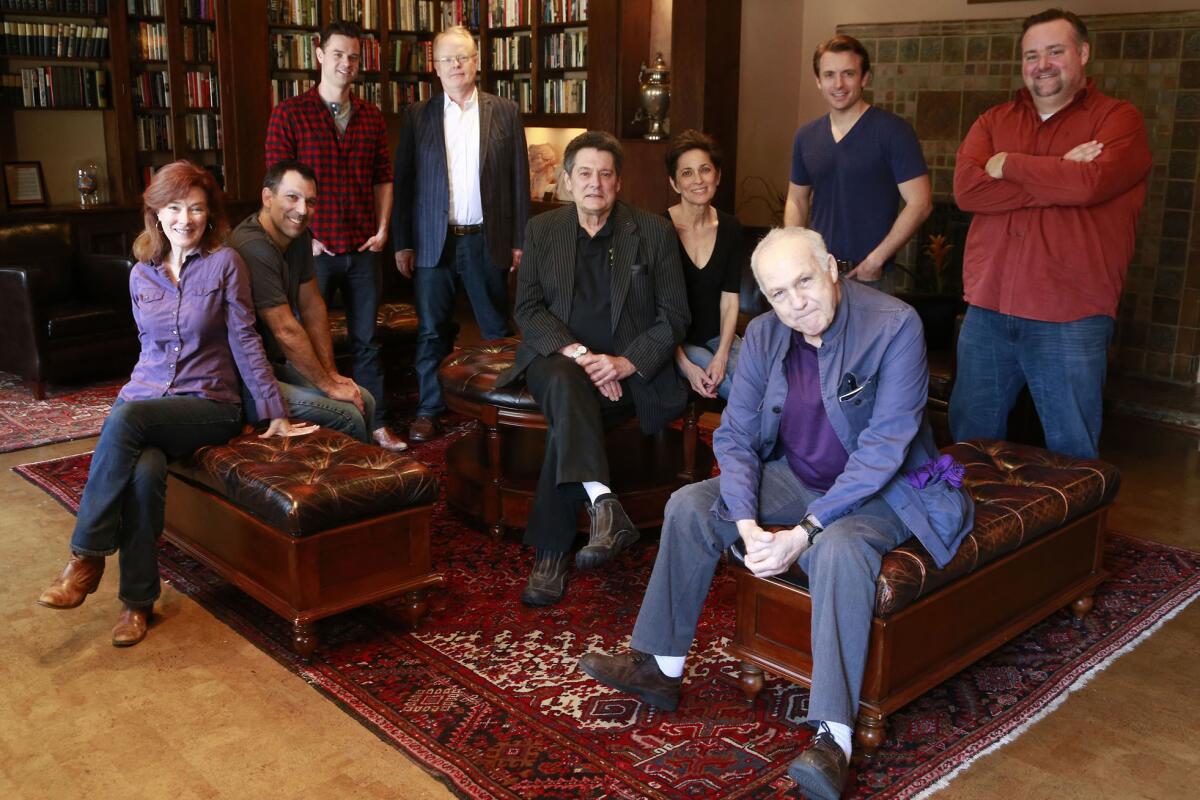
Portrait of the cast of the play “Casa Valentina,” at the Pasadena Playhouse, in Pasadena, CA March 14, 2016. From left: Valerie Mahaffey, Robert Mammana, Mark Jude Sullivan, Christian Clemenson, John Vickery, Nike Doukas, Lawrence Pressman, James Snyder and Raymond McAnally.
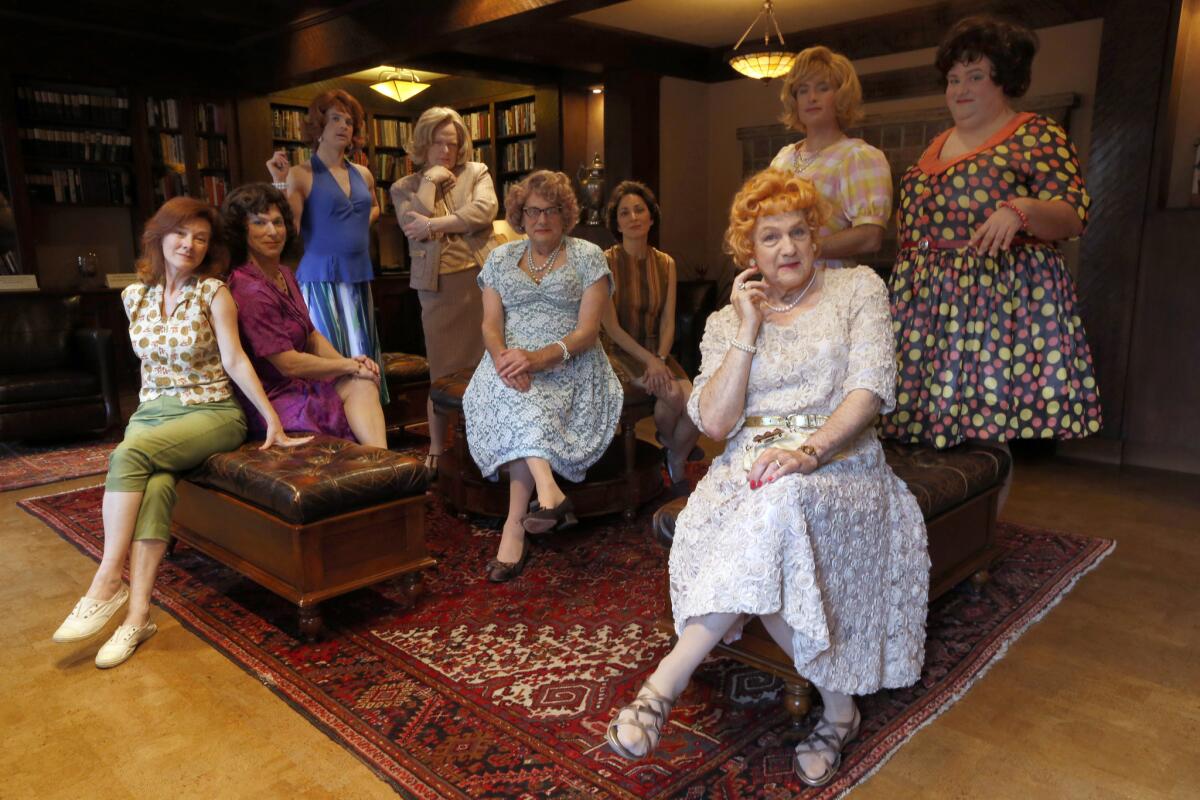
Portrait of the cast of the play “Casa Valentina,” at the Pasadena Playhouse, in Pasadena, CA March 14, 2016. From left: Valerie Mahaffey, Robert Mammana, Mark Jude Sullivan, Christian Clemenson, John Vickery, Nike Doukas, Lawrence Pressman, James Snyder and Raymond McAnally.
(Francine Orr / Los Angeles Times)
The play, originally presented by the Manhattan Theatre Club in 2014, is inspired by a real place run in the 1950s and '60s by Tito Valenti, a court translator known in female garb as Susanna, and his wife, Marie, who had a Manhattan wig shop. Here, men who might otherwise dress clandestinely in some shut-off part of their homes were free to spend the day in female attire among like-minded guests.
Decades later, personal snapshots of the resort's visitors were discovered at a Manhattan flea market and published in the 2005 photo book “Casa Susanna,” edited by Robert Swope, who found the photos, and Michel Hurst.
The pictures capture a quiet, domestic scene of men dressed in the tasteful, conservative fashions that their wives might have worn to PTA meetings. A gentleman wearing a bouffant wig and heart-shaped locket sits demurely on a couch with his knitting. Outdoors, a man in a tousled wig and robe points a garden hose at a flower bed. Lakeside, a gentleman strikes a glamour pose in a svelte, one-piece bathing suit. Meals are shared, parties primped for and birthdays celebrated.
“What I saw,” Fierstein said by telephone, “was this happiness, this relief to have your outside match your inside.”
That's something he set out to capture in “Casa Valentina,” in which Tito/Susanna and Marie are reincarnated as George/Valentina and Rita, the resort proprietors overseeing a weekend getaway that shifts from relaxation to business — then a cascade of revelations — when a visiting organizer encourages the casa's regulars to form a chapter in a new national support network.
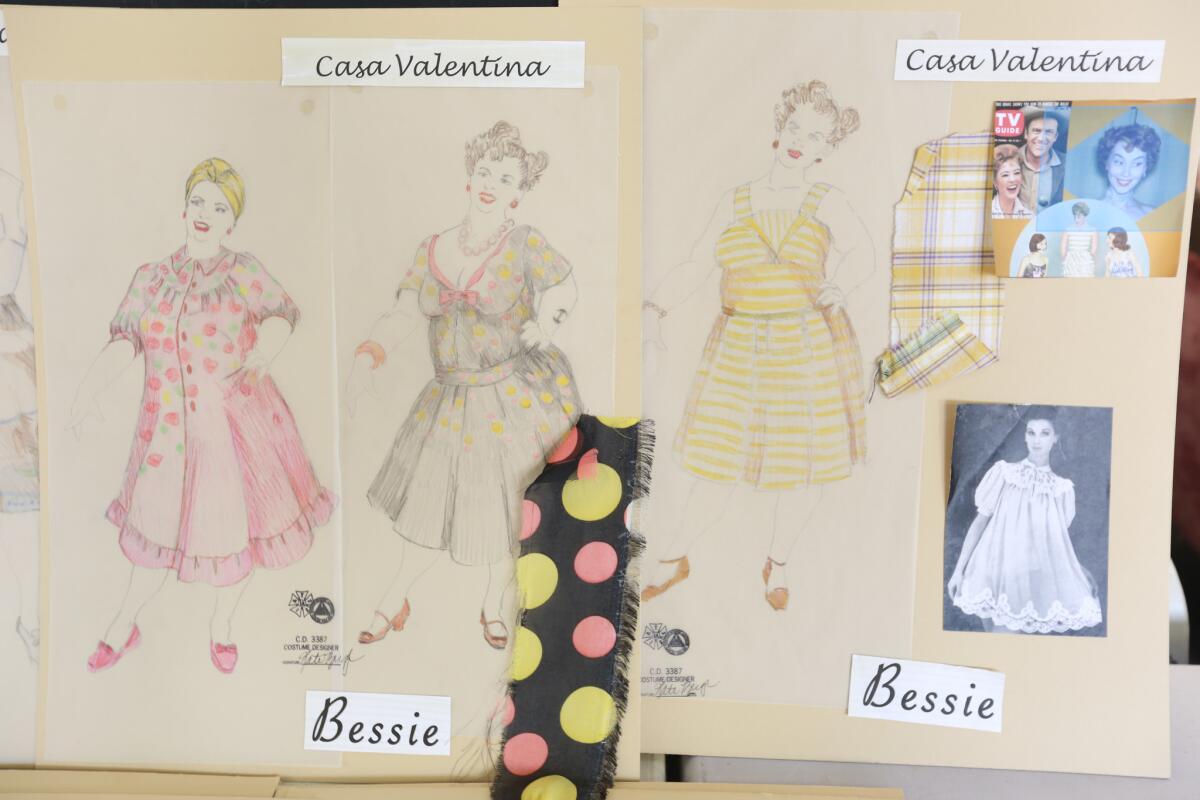
Costume designs for “Casa Valentina.”
In life, that group morphed and merged to became Tri-Ess, or the Society for the Second Self, a national educational, social and support group for heterosexual cross-dressers and their families. Nowadays Tri-Ess states on its website:
“There is within each man a set of personality potentials that are part of his birthright, but that society labels as ‘feminine' and says he should suppress. Crossdressers have made contact with these potentials and found their expression fulfilling. Integrating these into their whole personalities, crossdressers are able to smooth off some of the macho rough edges programmed by their upbringing. The result is a happier, healthier whole person.”
Fierstein, Lee and many others who've peered into the Valentis' resort admit they quickly realized they didn't know as much about cross-dressing as they thought.
It is not drag, the often performative act that's been brought to the public eye by the likes of Milton Berle, Divine and RuPaul. And it's not transgenderism, the feeling that one has been born in the wrong body, as seen in the experiences of Chaz Bono or Caitlyn Jenner.
As Fierstein delved into research, he found tremendous diversity — an entry point to understanding because vast ranges exists in all communities, marginalized or mainstream.
“We're so delicate and so fragile and so individual,” he said.
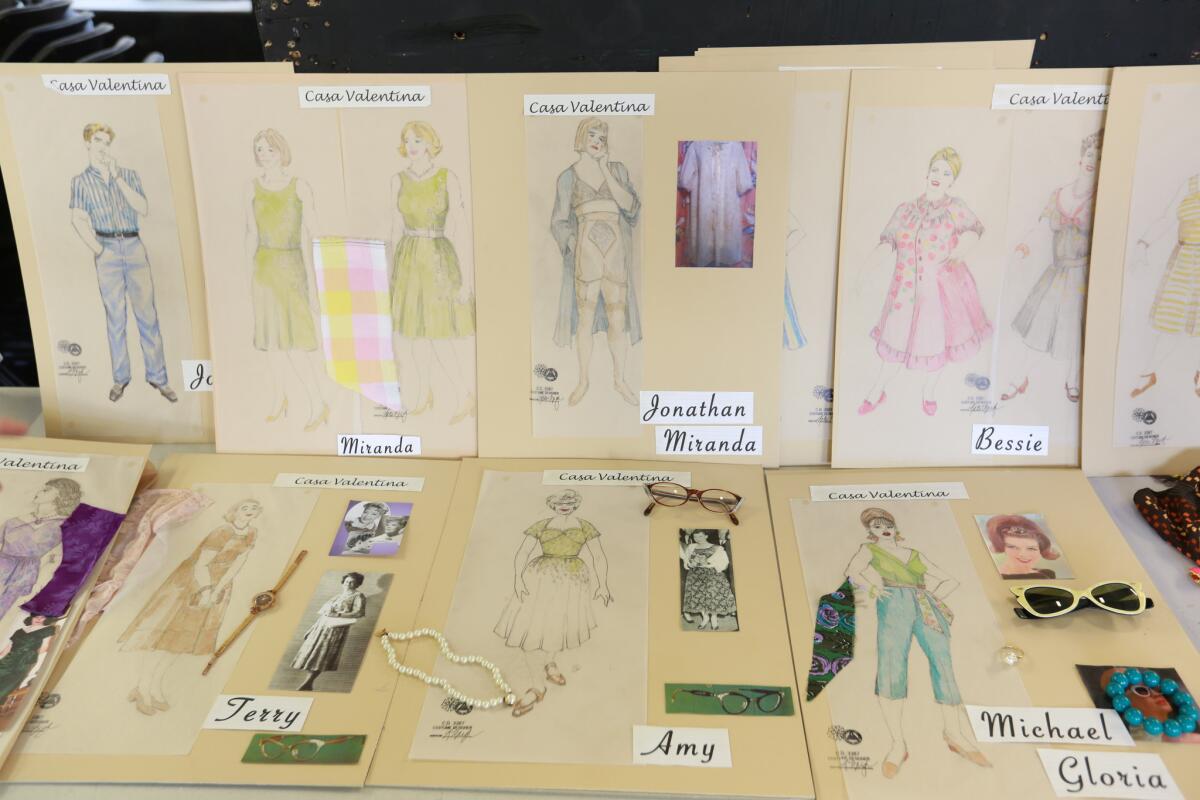
More costume designs and accessories.
Among the regulars of "Casa Valentina," he envisioned a decorated Army sergeant who in a dress becomes the chatty center of attention; a judge who fears breaches of privacy; and a glamorous head-turner who asks hard questions when she senses the sisterhood's consciousness needs to be raised.
And then there's the organizer, Charlotte, who is modeled after Virginia Prince, born Arnold Lowman, an L.A.-based pioneer in community-building who established Transvestia magazine, which contained personal essays, photos and tips, and who founded one of the organizations that became Tri-Ess.
The Pasadena Playhouse team is immersing itself in this world, intent on depicting it accurately.
“I'm doing a lot of listening,” Lee said, “and a lot of learning.”
Mark Jude Sullivan, who portrays the gorgeous pragmatist Michael/Gloria, says he feels “enormous responsibility” to get his role right, “especially when approaching a subject as unexplored as this one in popular media.”
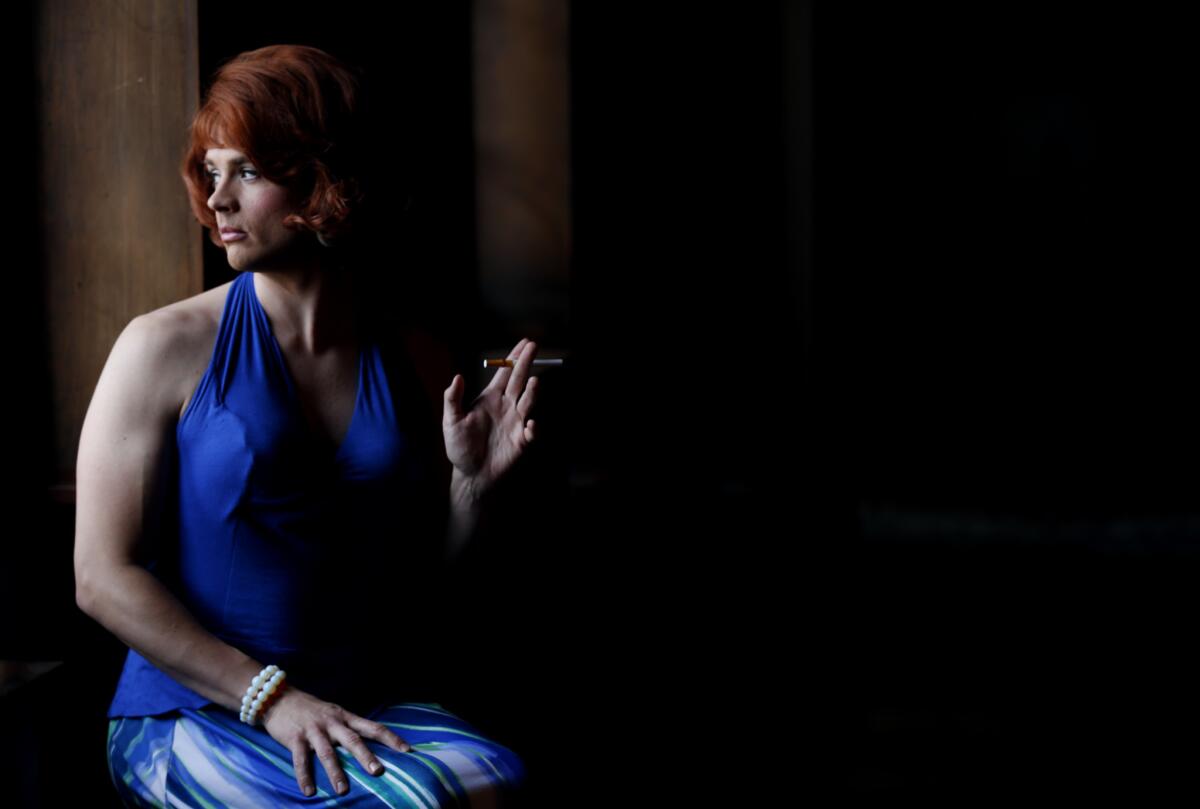
Mark Jude Sullivan portrays Gloria, a more fashion-forward member cast of the Casa Valentina crowd.
A tabletop in the rehearsal area is piled with copies of the “Casa Susanna” book and photocopies of Transvestia magazines, as well as books by and about Prince, including her “How to Be a Woman — Through Male.”
The first two days of rehearsal were completely devoted to discussion, said Lee, winner of multiple Emmys, including eight for “Frasier,” and director of many Pasadena Playhouse productions, including “110 in the Shade.” The conversation continued through rehearsals.
A visit by two area cross-dressers proved particularly enlightening.
From that 90-minute, in-depth meeting, John Vickery, who portrays the judge, also known as Amy, gleaned that “a lot of the people who do this are captains of industry, in very stressful jobs, and in some ways this is a relief from stress.”
He sensed, though, that “they really guard their privacy because of the danger of what it could do to their lives, their careers, their marriages.”
As well as understanding from the inside, the actors must comprehend from the outside. That's where the rehearsal-room women's wear comes in.
Beauty isn't easy, of course. The actors have encountered a bewildering array of slimming and shaping devices meant to transform their bodies into the silhouettes of the early '60s, a time of girdles and crinoline.“I have yet to find anything that's been presented to me that makes any sort of comfortable, practical sense,” said Raymond McAnally, who portrays the war hero Albert, known to his cross-dressing peers as Bessie.
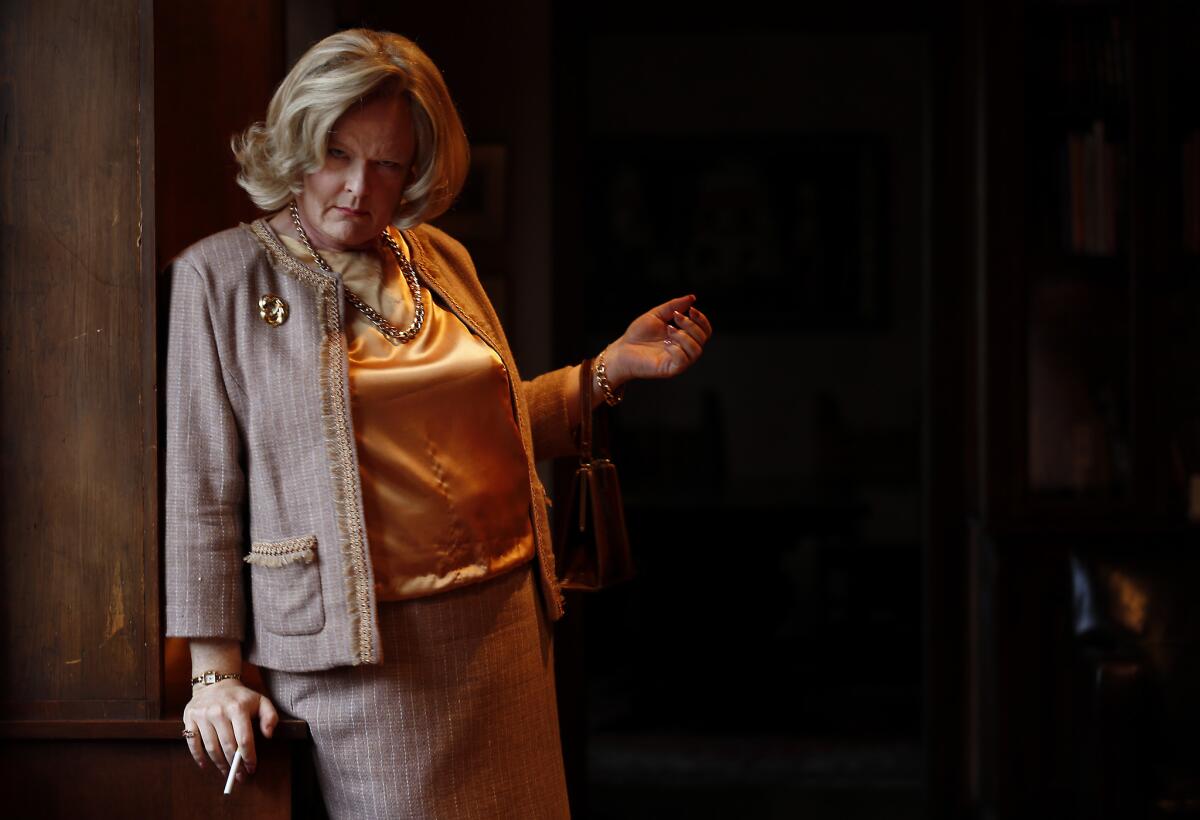
Charlotte, portrayed by Christian Clemenson, visits Casa Valentina as she organizes a national support network.
Christian Clemenson, who portrays Charlotte, the organizer, described his wrestling match with the combination girdle-brassiere known as the all-in-one. “It is this herculean effort,” he said. “I have to lie on the floor and wriggle like a fish, at the same time yanking, and then I have to recover from this whole exercise, because then I'm sweating.”
The sensitization seemed to be working, though.
“The first time I tried on one of the dresses they've built for me,” the amply proportioned McAnally said, “it didn't have sleeves, and all of a sudden I found myself looking in the mirror and picking apart my arms. I've never had a thought about how my arms look until now,” but “this is what the women in my life talk about all the time.”
Costume designer Kate Bergh has given walking lessons, helping the gentlemen to loosen their ramrod uprightness and learn to shift weight and let their hips sway a bit.
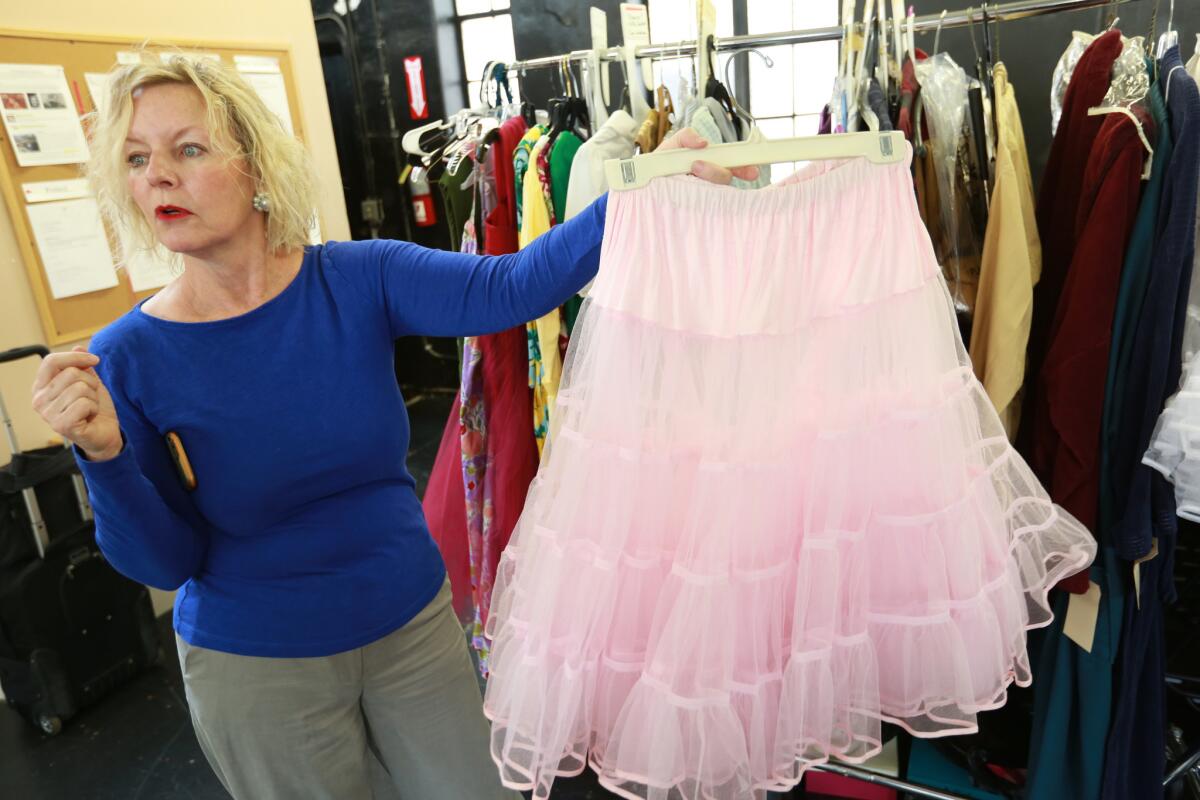
“Casa Valentina” costume designer Kate Bergh holds a crinoline to be worn under a dress to give it some early-’60s fullness.
That is a sideline to her main job of creating dresses appropriate to each character's age and personality. Among them are cheery, full-skirted creations for the sociable Bessie; a sleek, violet cocktail dress for soignée Valentina; a beige, Chanel-like jacket and skirt for businesslike Charlotte; and colorful capri pants and halter top for Gloria, the fashion-forward dresser of the younger set.
When the actors are in their usual masculine garb, Bergh observed, “they're very restrained, very controlled. But when they become women, they open up like a flower; they glow.”
------------
'Casa Valentina'
Where: Pasadena Playhouse, 39 S. El Molino Ave.
When: 8 p.m. Tuesdays-Fridays, 4 and 8 p.m. Saturdays, 2 and 7 p.m. Sundays. Ends April 10.
Tickets: $25-$125
Info: (626) 356-7529, www.PasadenaPlayhouse.org
Running time: 2 hours, 15 minutes
The biggest entertainment stories
Get our big stories about Hollywood, film, television, music, arts, culture and more right in your inbox as soon as they publish.
You may occasionally receive promotional content from the Los Angeles Times.








